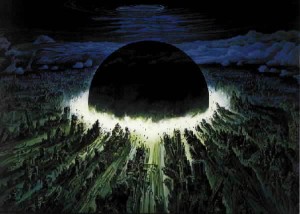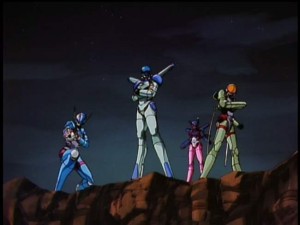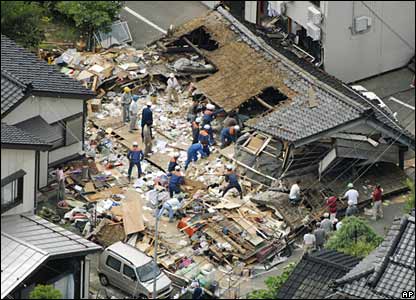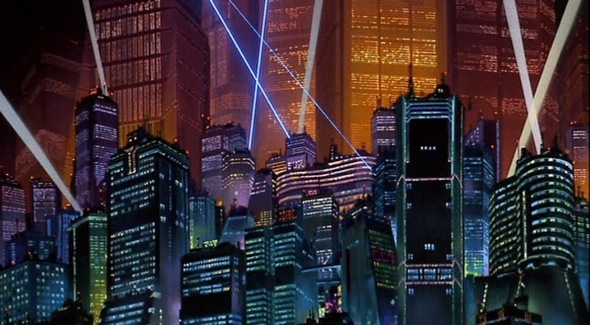Rebuilding
The death toll following the Tohoku Quake has been substantial. The damage to Japan’s infrastructure has also been severe. The loss of several nuclear reactors has not only threatened Japan’s environment with radiation, but has limited Japan’s power supply. Streets and buildings have been wrecked from tsunami waves. The loss of life is tragic; the loss of the ability to rebuild may compound the tragedy.
Yet some people see opportunity.
“If you look, this is clearly going to add complexity to Japan’s challenge of economic recovery,” [Larry] Summers said. “It may lead to some temporary increments, ironically, to GDP, as a process of rebuilding takes place.”
After the Kobe earthquake in 1995 Japan actually gained some economic strength due to the process of reconstruction, he added.
That’s Larry Summers, former economic adviser to President Barack Obama, on CNBC. He expressed a hope that the effort of rebuilding after the Tohoku Quake and Tsunami might lead to a renewed period of economic growth. He cites Japan’s rebuilding after the 1995 Kobe quake as an example.
This kind of thinking has its roots in the economic philosophy of John Maynard Keynes.
Without putting the audience to sleep, Keynes believed that aggregate demand was what drove economic growth. Inadequate demand was what led to unemployment. Therefore, in times of high unemployment, it made sense to take artificial measures to stimulate demand. That idea was captured and expanded in the 60s by the “Neo-Keynesian” school. Their suggestions that deficit spending could help boost a nation out of an economic crisis caught fire amongst policy makers. The notion of “economic stimulus” remains popular to this day, on both the right and left wings of politics.

Sure, this looks bad now. But the GDP potential is tremendous.
Keynes wouldn’t cheer the destruction brought about by the Tohoku Quake (neither, I should note, does Summers). But he would probably say that the rebuilding phase would spur demand in Japan’s industrial base. This would lead to increased jobs, increased investment and greater economic growth.
This sounds plausible. It’s the sort of thing that’s said about lesser crises, like the 2008 credit market collapse and the resulting American bailout. The alternative – the “austerity plans” that our European readers are probably getting a taste of – are monumentally unpopular. And it has the advantage of meeting a crisis proactively and with hope.
But if spurred economic demand will result from rebuilding Japan, what might a rebuilt Japan look like?
Revisioning
Why do cities exist?
Cities exist to allow for the convenient exchange of resources – in the form of labor, intellectual property or regular ol’ goods and materials. In ancient Mesopotamia and the Indus Valley, the most important resource was water: proximity to a river or spring. As agriculture and trade began to spread, cities began to spread other resources: finished goods, imported luxuries, skilled labor, food. Walls, roads and irrigation were built as needed.
Every city in history grew to its size because people found it worth their time to move there. London gets a lot of rain and fog due to its geographic location. But its proximity to the Thames River makes it a hub of trade and industry. People have flocked to London for hundreds of years, making it one of the densest cities in the world.
Outside of games like Civilization, no one ever builds a city by picking a spot at random and saying, “There.” And when people try, the result often falls apart (see Dubai). Watch what happens to a city when its primary resource – such as manufacturing in Detroit, or credit in Las Vegas – is threatened.
Cities arise organically. People move to a city because they need what that city has to offer. They invest in a city because they think the city will be productive. This growth is not random – existing power structures will define what goes where. But that definition doesn’t always work.
It’s possible to choke off a city’s growth, or to build it in unnatural and useless directions. James Howard Kunstler gets particularly cranky about this sort of thing, as epitomized in this biting, funny, depressing and informative TED talk from 2007:
Kunstler’s talking about suburban sprawl primarily. But he also talks about some dense spots of urban misallocation, like Boston’s City Hall. Boston’s City Hall Plaza in Government Center is possibly the ugliest building in America. It’s a malformed concrete block that sits at the center of a vast, shallow plaza. It discourages lingering. Everyone who approaches it has their hackles up; everyone who exits it is in a hurry to get away.
Kunstler’s concern in this TED talk is “places not worth caring about.” He’s concerned about the language of architecture – what do the buildings in a public space say to its residents? And architecture has a language, the same way that dance, painting, music and writing do.
What happens when a bunch of foreigners take over a country whose language they don’t speak?
In order for Japan to recover from this tremendous disaster, it will need a substantial influx of foreign capital. People will need to invest in Japan. Japan cannot rebuild on its own, not with the damage it’s suffered to its infrastructure. “Buy when there’s blood on the streets,” goes the (somewhat unpleasant) saying.

But foreign investment always makes people skittish.
Americans have been leery of foreign investment for years. There was massive concern about the Japanese “buying up America” in the late 80s and early 90s, typified in the Michael Crichton novel (and Wesley Snipes / Sean Connery film) Rising Sun. When America’s net imports exceed its net exports – which is the case as of this writing – it’s always presented as a “trade deficit,” not a “credit surplus.” In reality, though, it means the same thing: America has a lot of foreign countries (such as China) willing to invest in it, not as many willing to buy its products.
Japan has always looked like a country ready to embrace Western ideals and Western investments. Ever since the Meiji Restoration, Japan’s embrace of capitalism has been almost quicker and more thorough than America’s own. But the relationship hasn’t always been fruitful. Sarari-man civilization has its discontents: cubbyhole hotels, depression and suicide, disaffected youth.

Bubblegum Crisis and Akira reflect this dissatisfaction with foreign investment. In the face of a disaster, corporations and governments step in to rebuild Tokyo and make it more productive than before. But in doing so, they replace public spaces that had centuries of tradition with monolithic buildings. These massive arcologies each have one purpose – to house and employ the workers of a particular corporation. If you’re not part of that corporate culture – if you’re a runaway “Sexaroid” Boomer, perhaps, or a motorcycle gang – where do you go? What part of the city is yours?
Does this mean that we shouldn’t send money to Japan – whether as charity or as investment? No. But it means that Japan has long been afraid of the effect that foreign investment can have on its culture. Thousands of homes, shops and public spaces were swept away by the Tohoku tsunami. Japan does not have the infrastructure, or the credit, to replace them. This means that the decision as to what goes into those vacant spaces will be made by government institutions or international corporations.
Will those monolithic powers have Japan’s best interests at heart? We must hope so. But anime fans have reason to be worried.

I now have Konya Wa Hurricane stuck in my head, I hope you are happy!
It remind me Le Corbusier once had a plan to radically redesign Paris in the 30’s,the plan never got through, but a digital artist tried to make a picture of what it look like now
It make the french capital look very tokyo-esque in my opinion
http://artsdoc.blogspot.com/2010/02/bublex-alain.html
I for one think from all the genre of science-fiction, think Cyberpunk is were we are heading
I am happy!
Allow respond to one part the article:
“Outside of games like Civilization, no one ever builds a city by picking a spot at random and saying, “There.” And when people try, the result often falls apart (see Dubai). Watch what happens to a city when its primary resource — such as manufacturing in Detroit, or credit in Las Vegas — is threatened.”
This deserves a small ‘well, ACTUALLY’. In fact, quite a number of cities have been built from scratch. The main example is Brazil’s capital, Brasilia, which indeed was built out of nowhere as a result of a constitutional clause that the country needed a capital in central Brazil, instead of coastal Rio de Janeiro.
A slightly less extreme example is Ankara, another capital city from the modernist, post World War II era. Whilst it did exist before becoming Turkey’s capital at Ataturk’s decree, it amounted to so little that you may as well consider it a newly founded city altogether. In both instances, the places were picked quite randomly, although a central position in the country did help. However, it could have been 20 miles east or west without too much trouble.
This does not necessarily play down the article’s main point, but I guess that depends on how successful one considers these two examples as examples of city-building. My perception is that in both cases, everyone who is not a bureaucrat avoids them as much as possible. However, ‘fallen apart’ they have most certainly not.
Oops, my HTML skills let me down severely there… Feel free to edit my previous comment into something more orderly.
I just got rid of the links. :\
Most of the Brazilians I know (or have read online) don’t think much of Brasilia. Ankara I couldn’t speak to. Good to have these as examples, though!
To get a little more badical: while I can’t quite call Washington D.C. a “failed city,” I don’t think I’m out of line by saying that it’s not the greatest place to live. Crime and poverty have long been an issue in wide swaths of the city, and the surrounding suburbs are tremendously expensive. The city only produces two things: legislation and failed sports franchises. And unless you can tap into either, there’s not a lot there.
Yeah. Brasilia is considered an inaccessible failure.
DC has other issues associated with it–mainly that it doens’t have the ability to truly govern itself (Congress has ultimate authority over DC, which makes DC non-statehood even more messed up when you think about it). It’s a complicated case to bring up in the ‘constructed cities tend to fail’ argument.
http://io9.com/#!5790596/watch-jarring-footage-of-chinas-massive-ghost-towns
China’s not doing very well with the constructed cities, either.
Well, there’s Madrid, which was a little village on a small river until Phillip II decided to move the court there, instead of putting it in one of the large existing cities like Zaragoza or Seville. 5 centuries later, it works (as well as any other city in Spain, anyway).
Who knows? Maybe the only thing Brazilia and DC need is 5 more centuries.
The only thing I know about economics is from reading Naomi Klein’s “Shock Doctrine” which is a great book, but the whole time reading I was cowardly thinking “I can’t beat ’em, so how do I join ’em?” Then the show “Treme” showed how preserving the local culture in face of disaster is done; it also has a Japanese investor who supports the local music culture.
So is the question why can’t these institutions promote or coexist with a culture other than their own, and through intimidation at that? Like the Japanese investor in Treme doesn’t force the guy to play the Japanese national anthem or anything.
Also, according to Mad Men there is no fog in London, the “fog” was euphemism for the heavy industrial coal smog at the turn of the century.
The Shock Doctrine is a great read, albeit kind of depressing/ moral-outrage-inducing (or at least it was for me). Admittedly, I hadn’t even thought of it in this context, but now that you bring it up, I genuinely wonder what “school” of economics will win out in the reformation of Japan’s economy.
“Outside of games like Civilization, no one ever builds a city by picking a spot at random and saying, “There.” And when people try, the result often falls apart (see Dubai)”
Can’t help but wonder how ghastly Dubai if turned into something like detroit a couple decade from now
Economic stimulus in the form of direct spending seems to have fallen out of favor with conservatives. Their preferred vehicle is tax cuts. After all, zero Republican members of the house and three Republican senators (Susan Collins, Olympia Snowe, Arlen Specter) voted to pass the stimulus bill back in 2009.
I also find it interesting that you wrote “sarari-man” instead of “salary man”, since I’m pretty sure that Japanese borrows those words from English. I guess the phrase does have a specific connotation in Japanese, though.
Yeah, sarari-man seems uniquely Japanese, even though it’s a Nipponization of an English (well, Romance-language) word. It’s similar to how “douche” means something different in American than it does in France.
And while conservatives in America may not use direct expenditure as an economic stimulus, tax cuts to one sector while raising year-over-year spending are an indirect form of wealth distribution. Which is ultimately the same thing (though a neo-Keynesian might distinguish between the two, since one is G and the other is T and a bit of I, but I crave pardon).
I haven’t finished reading this yet, but it’s interesting to note that there was an anime series made recently (in 2009, according to the almighty Wikipedia) called Tokyo Magnitude 8.0, which is an imagining of what might happen if, as the title suggests, an 8.0 magnitude earthquake struck Tokyo and the surrounding regions. The makers claim to have tried to make it as realistic as possible, although it is somewhat dramatized and large objects have a propensity for almost falling on the protagonists in nearly every episode. Anyhow, I thought back on that series when the earthquake struck Japan in March, and shivered a little.